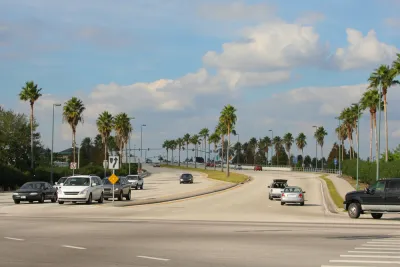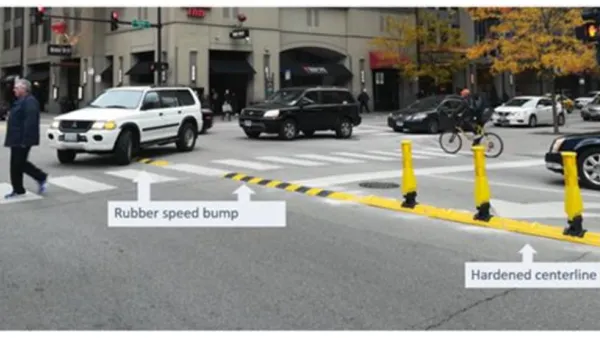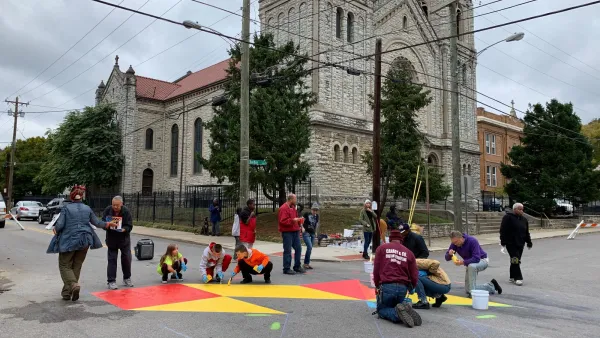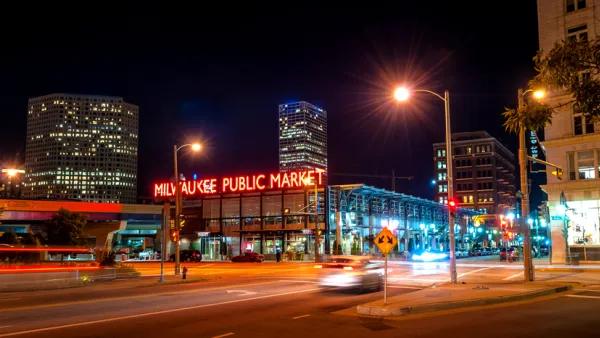A Smart Growth America report put the spotlight on Orlando and the entire state of Florida as leading the nation in pedestrian deaths per capita. NPR investigate what is being done to lose the infamous title.

Authors of Smart Growth America's Dangerous by Design, 2014 study "blame the city's layout, design of its roads, and the culture of its drivers," states the NPR host in the introduction to Greg Allen's report. [Listen here.]
It's not the first time Florida claimed the infamous title. In fact, a similar report three years ago helped compel Billy Hattaway, "a bike and pedestrian safety zealot," to return from the private sector to take his current position as a district secretary with the Florida Department of Transportation.
"Because of the nature of land development patterns, we ended up with a lot of higher-speed, larger roads, because people are driving longer distances to get back and forth to work," Hattaway says. "The pressure to increase the size of roads is what contributed to the problem."
The state "has developed a long-range plan for improving pedestrian and bike safety" that addresses street redesign, adding roundabouts and other traffic calming measures to reduce speeds. It has also tackled the "culture" problem, which "may be more difficult than redesigning highways," states Allen.
In Orlando, a coalition of groups that includes traffic planners, government, health care groups and the public schools is trying, with a campaign called "Best Foot Forward."
One partner agency carries a lot of influence with errant drivers is the Orlando Police Department, which has been conducting "sting operations, putting plainclothes officers at crosswalks and issuing tickets and warnings to violators."
The campaign has been successful, relatively speaking, reports Amanda Day, project director at Best Foot Forward. See Orlando's "Pedestrian Safety" brochure [PDF].
Day's group monitors a number of streets in the city, and on roads where the speed limit is 30 miles per hour or less, Day says, drivers are yielding more often. Previously, drivers stopped for pedestrians 12 percent of the time. Today, she says, half the drivers are yielding.
Orlando has company at the top of the "most dangerous cities" for pedestrians list with three other Florida cities: Tampa, Jacksonville, and Miami.
FULL STORY: Orlando Steps Up To Make Its Streets More Pedestrian-Friendly

National Parks Layoffs Will Cause Communities to Lose Billions
Thousands of essential park workers were laid off this week, just before the busy spring break season.

Retro-silient?: America’s First “Eco-burb,” The Woodlands Turns 50
A master-planned community north of Houston offers lessons on green infrastructure and resilient design, but falls short of its founder’s lofty affordability and walkability goals.

Delivering for America Plan Will Downgrade Mail Service in at Least 49.5 Percent of Zip Codes
Republican and Democrat lawmakers criticize the plan for its disproportionate negative impact on rural communities.

Test News Post 1
This is a summary

Test News Headline 46
Test for the image on the front page.

Balancing Bombs and Butterflies: How the National Guard Protects a Rare Species
The National Guard at Fort Indiantown Gap uses GIS technology and land management strategies to balance military training with conservation efforts, ensuring the survival of the rare eastern regal fritillary butterfly.
Urban Design for Planners 1: Software Tools
This six-course series explores essential urban design concepts using open source software and equips planners with the tools they need to participate fully in the urban design process.
Planning for Universal Design
Learn the tools for implementing Universal Design in planning regulations.
EMC Planning Group, Inc.
Planetizen
Planetizen
Mpact (formerly Rail~Volution)
Great Falls Development Authority, Inc.
HUDs Office of Policy Development and Research
NYU Wagner Graduate School of Public Service





























